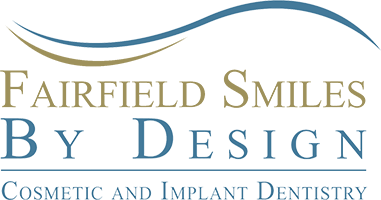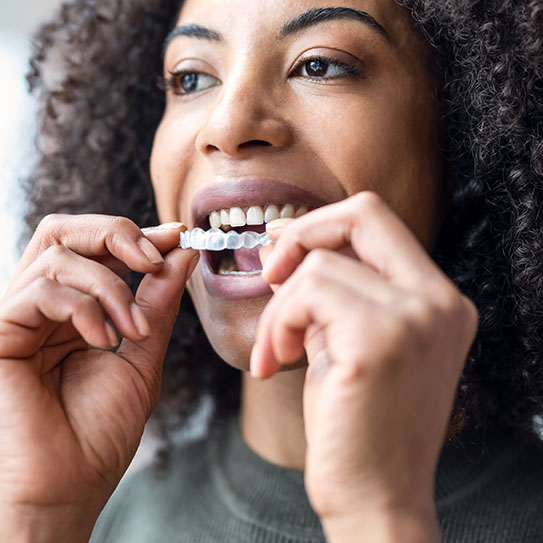Orthodontic Treatment Is Individual, Not One-Size-Fits-All
If you’re ready to straighten your teeth and achieve a more confident smile, you’re likely weighing the two most popular orthodontic options: Invisalign and traditional braces. Both can effectively treat a wide range of alignment issues, but the right choice depends on your specific needs, lifestyle, and treatment goals. At Fairfield Smiles by Design, we offer both Invisalign and braces, and Dr. Pablo Cuevas can help you make an informed decision based on your smile and preferences.
Understanding Invisalign
Invisalign uses a series of custom-made, clear plastic aligners to gradually shift your teeth into alignment. These aligners are removable and nearly invisible, making them a popular choice for adults and teens who want a discreet orthodontic solution. Key benefits of Invisalign:
- Discreet appearance: The clear aligners are almost unnoticeable when worn.
- Removable trays: You can eat, drink, brush, and floss without restrictions.
- Comfort: Smooth plastic trays cause less irritation than metal brackets and wires.
- Fewer office visits: You’ll change aligners at home and only need occasional check-ins with your dentist.
- Invisalign is ideal for treating mild to moderate alignment issues, including crowding, gaps, and minor bite problems. However, more complex orthodontic needs may still require braces.
Understanding Traditional Braces
Traditional braces use metal or ceramic brackets bonded to each tooth, connected by wires and elastics. Over time, adjustments to the wires move your teeth into the desired position. Key benefits of braces:
- Effective for complex cases: Braces are highly effective for correcting severe misalignment and bite issues.
- No need for self-discipline: Unlike Invisalign, braces stay on your teeth 24/7, so treatment progress doesn’t rely on patient compliance.
- Affordable: Braces may be a more cost-effective option depending on your insurance and the complexity of treatment.
- While braces are visible and can be slightly more uncomfortable due to wires and brackets, they remain a reliable and time-tested treatment option.
Comparing Invisalign and Braces
When deciding between Invisalign and traditional braces, it helps to understand how they differ in key areas:
- Appearance: Invisalign aligners are made of clear plastic, making them nearly invisible when worn. Braces, on the other hand, are more noticeable, though our ceramic options are available for a less obvious look.
- Removability: One of Invisalign’s main advantages is that the aligners are removable. You can take them out for eating, brushing, and flossing. Braces are fixed to your teeth and can only be removed by your dentist.
- Comfort: Invisalign trays are smooth and tend to cause less irritation to the cheeks and gums. Braces may cause some discomfort, especially after adjustments, and the brackets or wires can sometimes irritate soft tissues.
- Maintenance and Cleaning: With Invisalign, maintaining your oral hygiene is easier since you can remove the trays and brush and floss normally. Braces require more effort to clean around brackets and wires, which can increase the risk of plaque buildup if not done properly.
- Office Visits: Invisalign typically requires fewer in-office visits. You’ll receive a series of aligners and switch to a new set every few weeks at home. Braces require more frequent visits for adjustments and wire tightening.
- Suitability for Complex Cases: While Invisalign is great for mild to moderate issues, traditional braces are often more effective for correcting severe misalignment, large gaps, or complex bite problems.
- Dietary Restrictions: Since Invisalign trays are removed during meals, you can eat whatever you like. With braces, you’ll need to avoid sticky, chewy, or hard foods that could damage the brackets or wires.
What Other Factors Should I Consider?
When deciding between Invisalign and braces, there are a few personal and clinical factors to take into account:
- Your Orthodontic Needs: Invisalign works well for many patients but may not be suitable for significant bite corrections or severe misalignment. Dr. Cuevas will assess your teeth and bite to determine the best option.
- Lifestyle and Appearance: If you’re concerned about how braces will affect your appearance at work or school, Invisalign offers a more discreet alternative. The removable trays are also more convenient for those with busy or social lifestyles.
- Discipline and Responsibility: Invisalign requires a high level of responsibility. You must wear the aligners 20 to 22 hours a day and switch trays on schedule. If you’re not consistent, the treatment may take longer or be less effective. Braces, being fixed, eliminate that variable.
- Budget and Insurance: Cost may vary depending on the length and complexity of treatment. In many cases, insurance plans offer similar coverage for both options. We’re happy to walk you through your benefits and provide a cost estimate during your consultation.
Still Unsure Which Option Is Right for You?
Choosing between Invisalign and braces is a big decision, and it’s perfectly normal to have questions. The best way to decide is to schedule a consultation with a qualified Fairfield dentist like Dr. Cuevas. We’ll evaluate your bite, discuss your goals, and explain which treatment will work best for you.
The content on this blog is not intended to be a substitute for professional medical advice, diagnosis, or treatment. Always seek the advice of qualified health providers with questions you may have regarding medical conditions.
Visit Fairfield Smiles By Design
Call us today!





